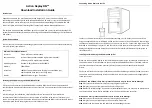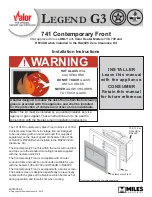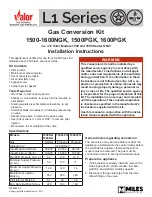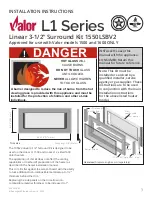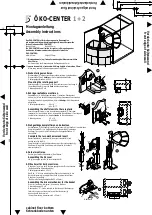
LWS Dielectric Leaf Wetness Sensor
8
Duration of leaf wetness can be determined either by post processing of data,
or by programming the data logger to accumulate time of wetness based on the
Boolean threshold. Accumulation of dust and debris, such as avian fecal
matter, will change the Boolean threshold. So, while having the data logger
accumulate time of leaf wetness, or time of frost, may be convenient, assurance
of data quality requires retention of the base millivolt measurements.
Collect data frequently enough to capture changes in surface
wetness. A sample frequency of 15 minutes or less is usually
necessary to accurately capture leaf wetness duration.
8. Maintenance
The accumulation of dust and debris will cause the dry output to increase and
change the Boolean threshold. Clean the sensing surface with a moist cloth
periodically or when elevated dry output is detected.
The LWS leaf wetness sensor withstands typical outdoor radiation and
precipitation loads for more than two years. If using the LWS in areas with
unusually high radiation loads, Campbell Scientific recommends applying
Revivex UV Protectant (available from
www.gearaid.com/products/revivex-
) every 45 days. Revivex UV Protectant is the only tested and
approved UV blocking system for this leaf wetness sensor. Revivex UV
Protectant was formerly known as Gear Aid UV Tech.
To apply Revivex UV Protectant:
1.
Wipe sensor clean.
2.
Spray sensor surface with Revivex UV Protectant.
3.
Rub with soft cloth until dry.
9. Acknowledgement
Portions of this manual are copyrighted by Meter Environment and are used by
permission.
NOTE


























